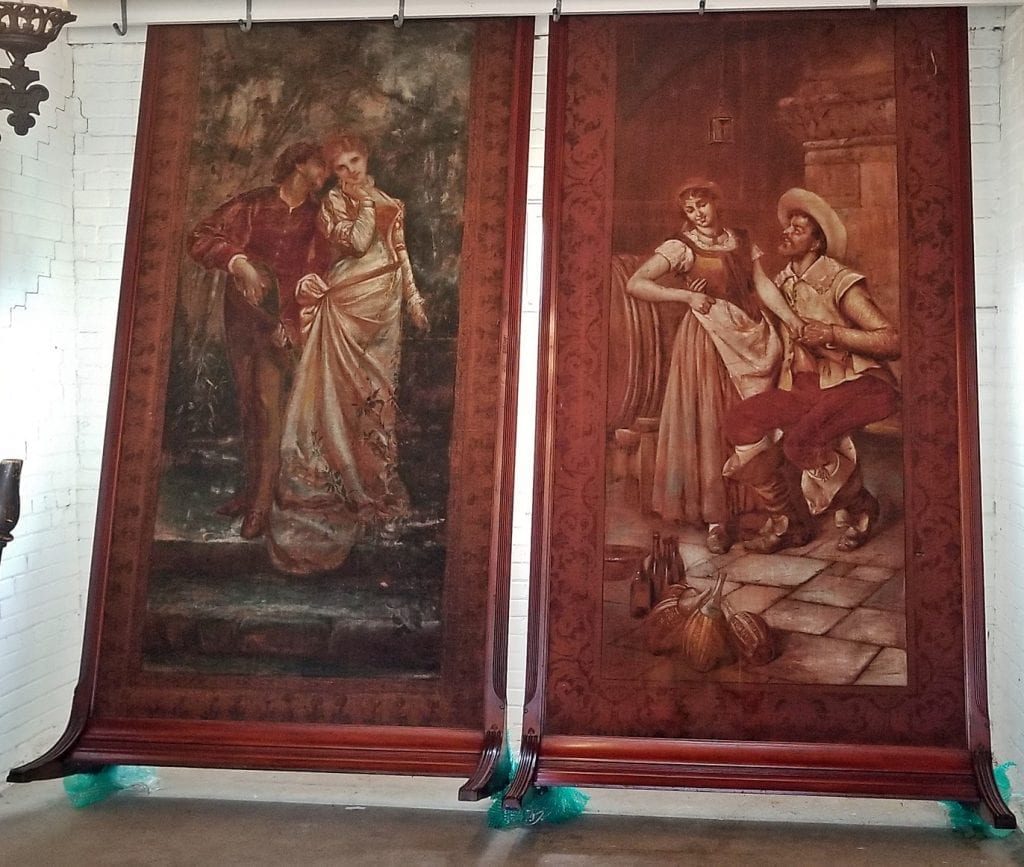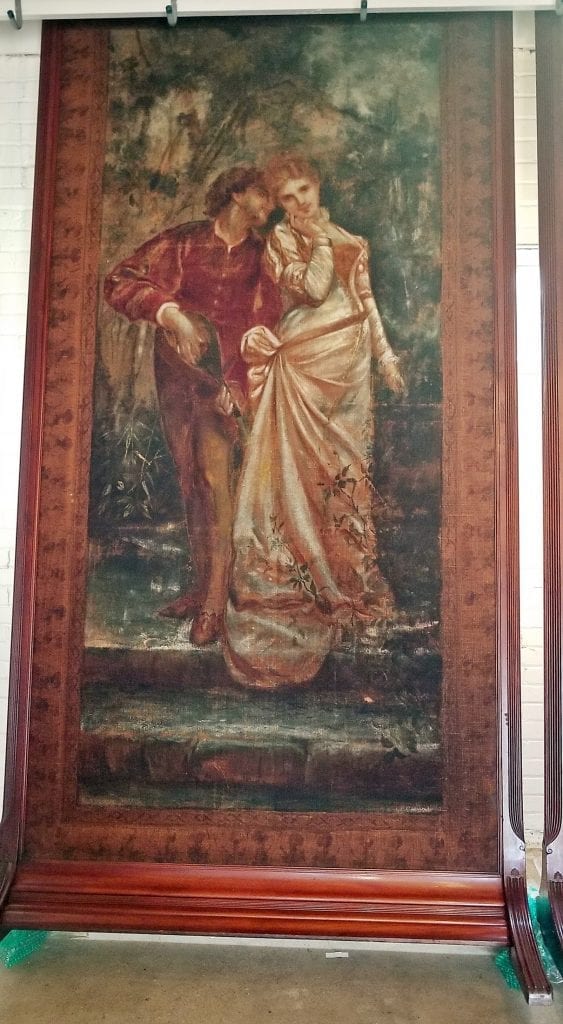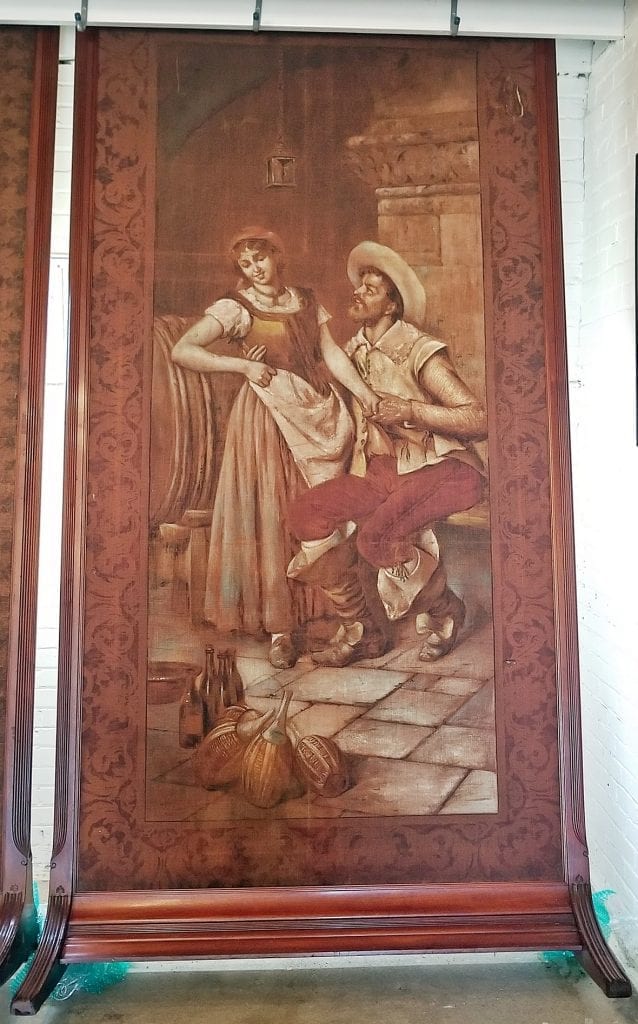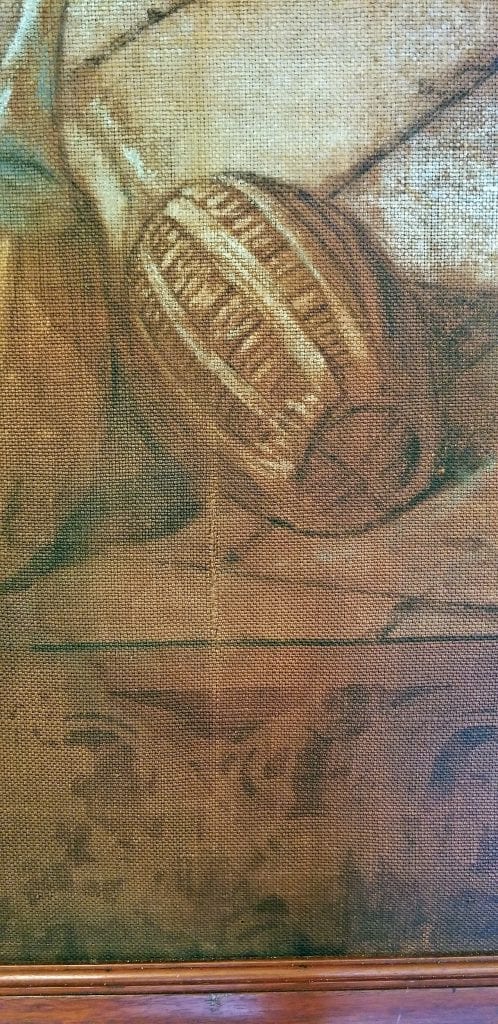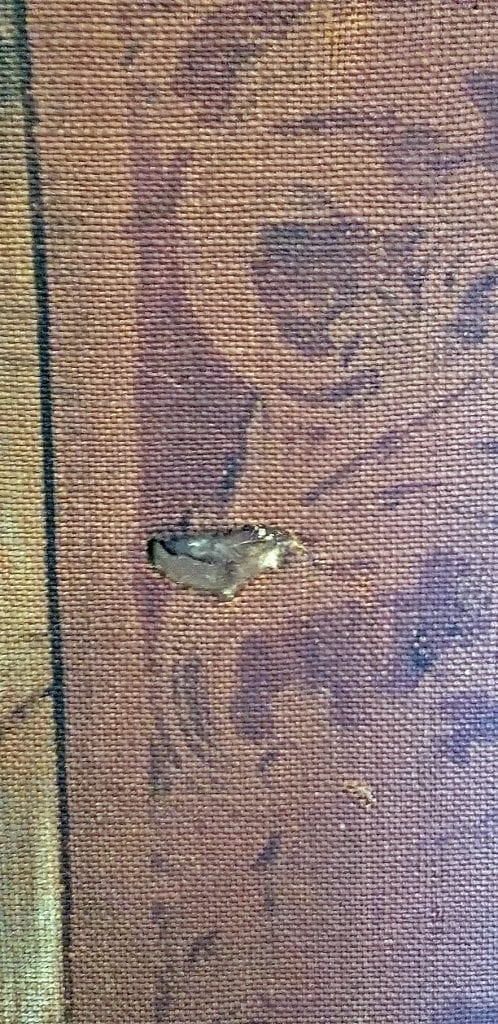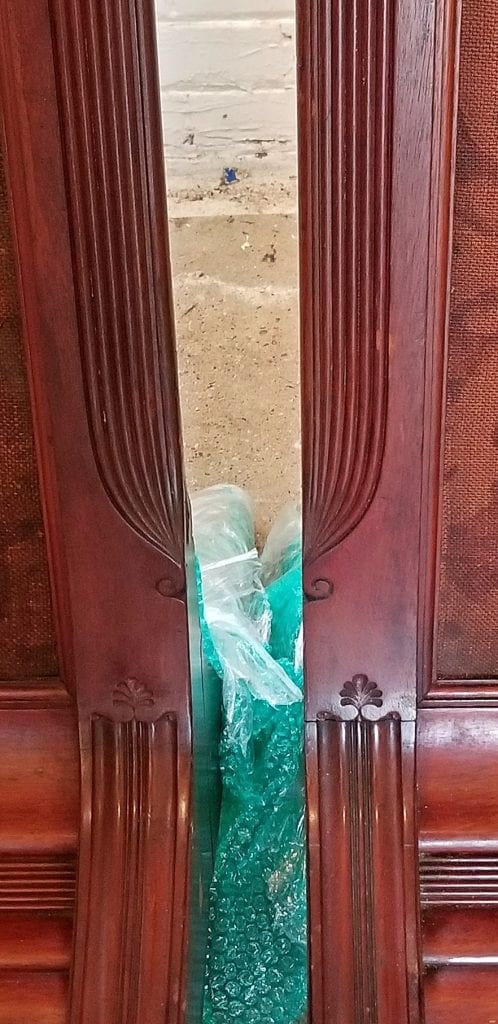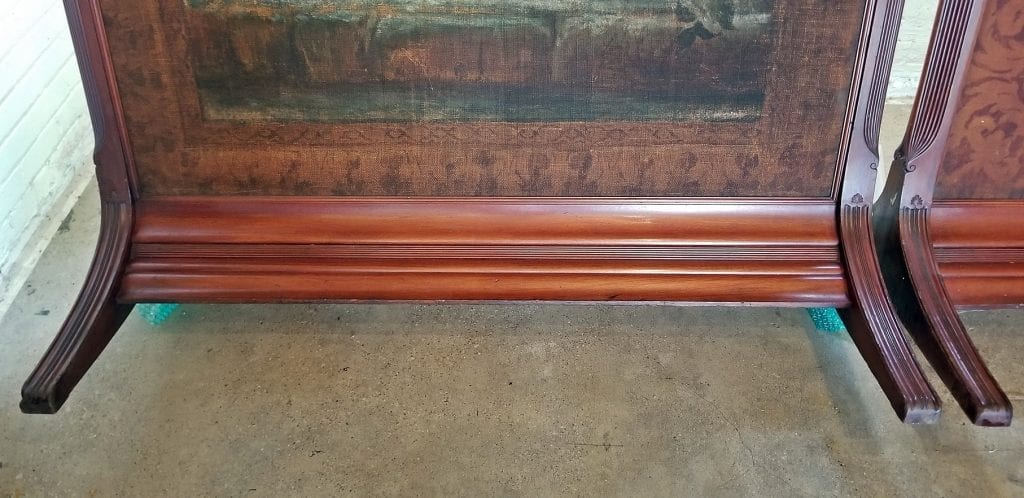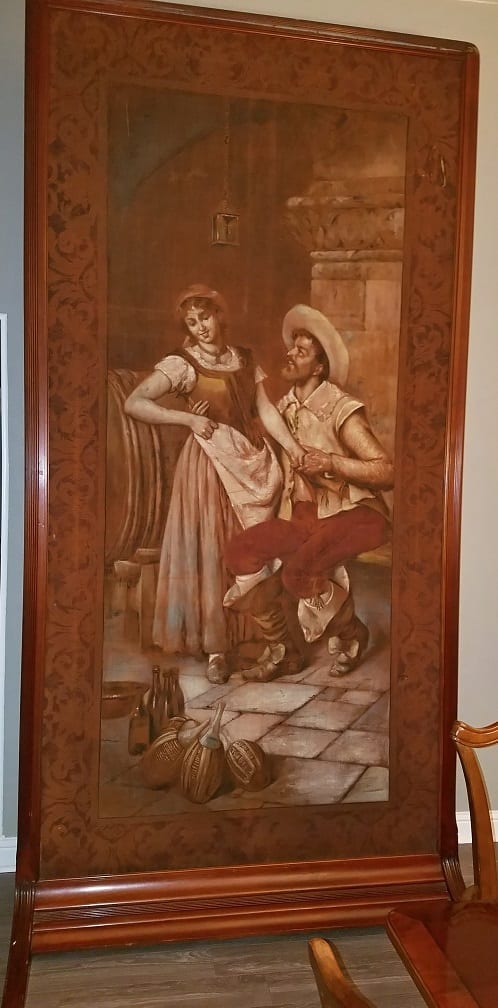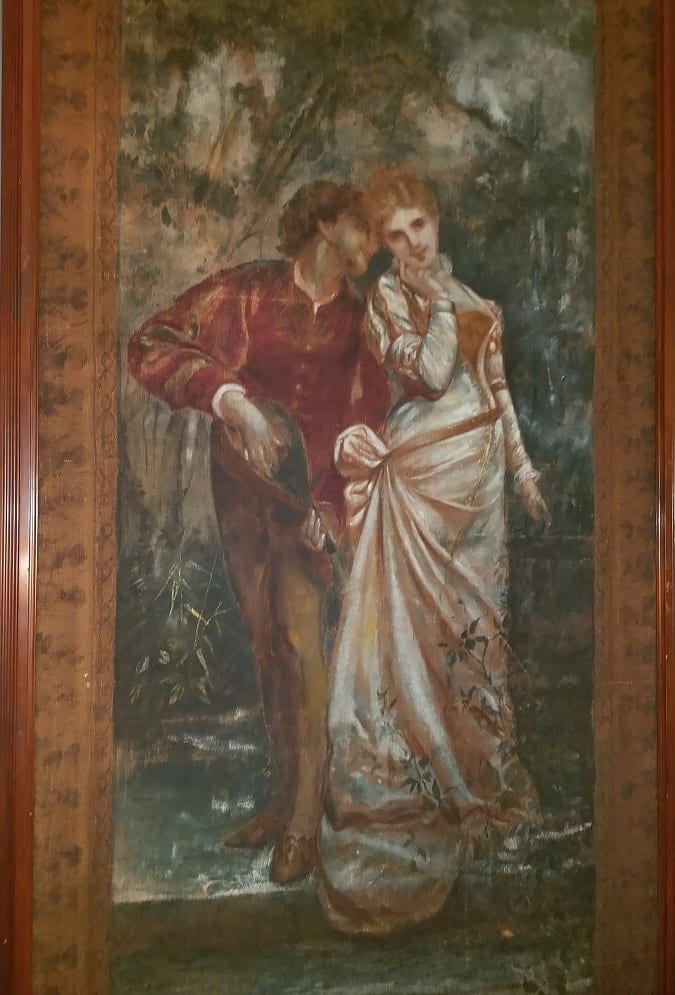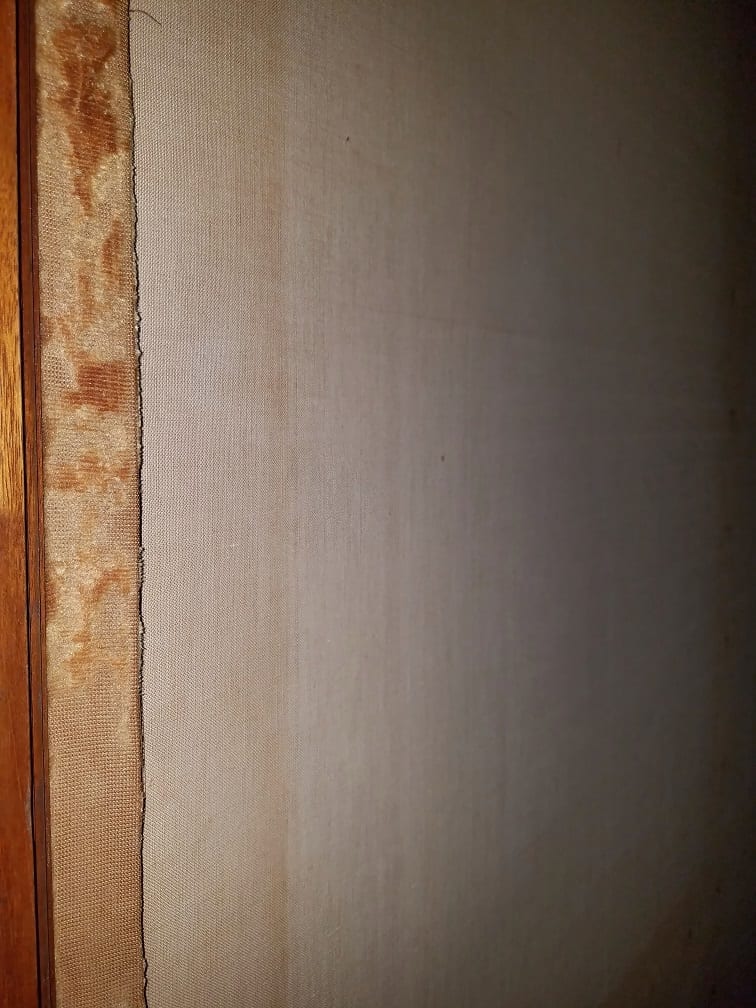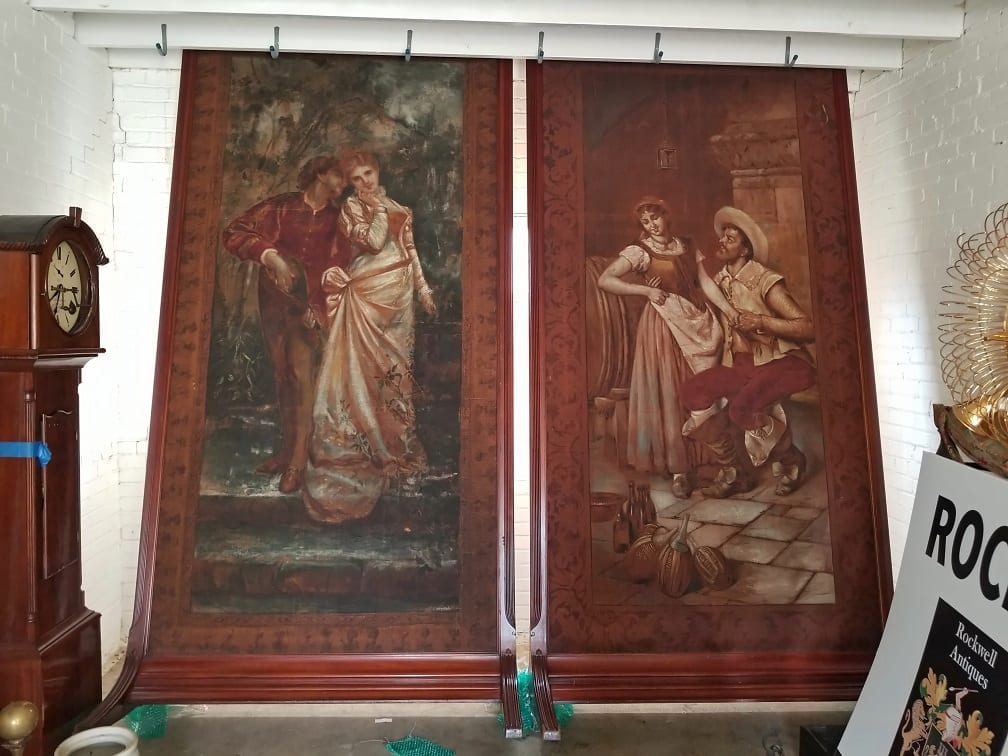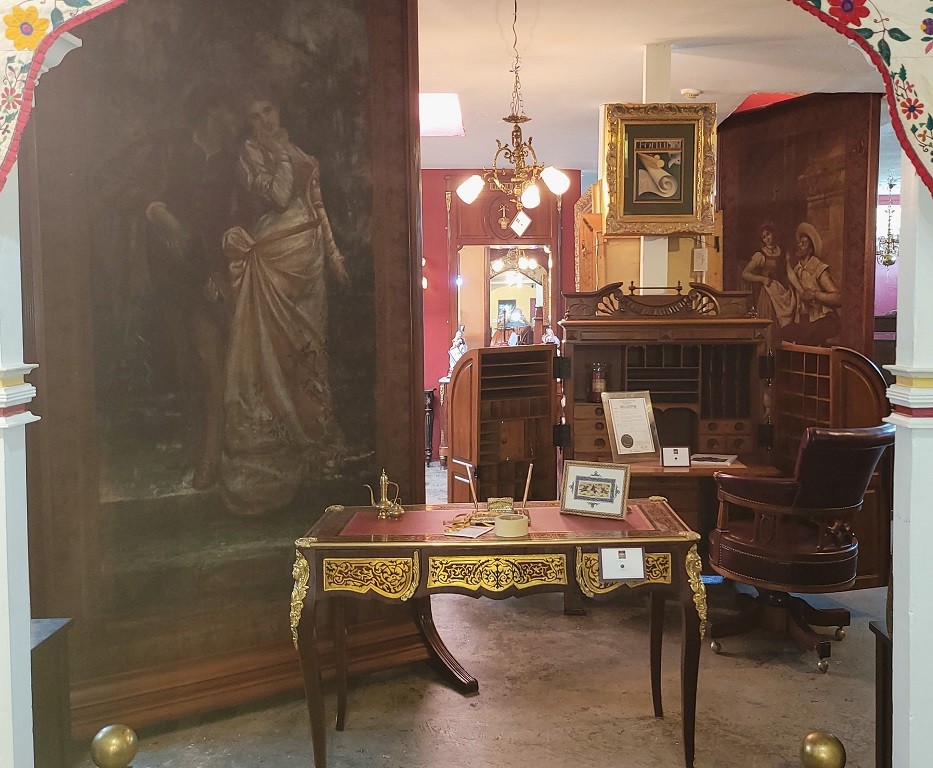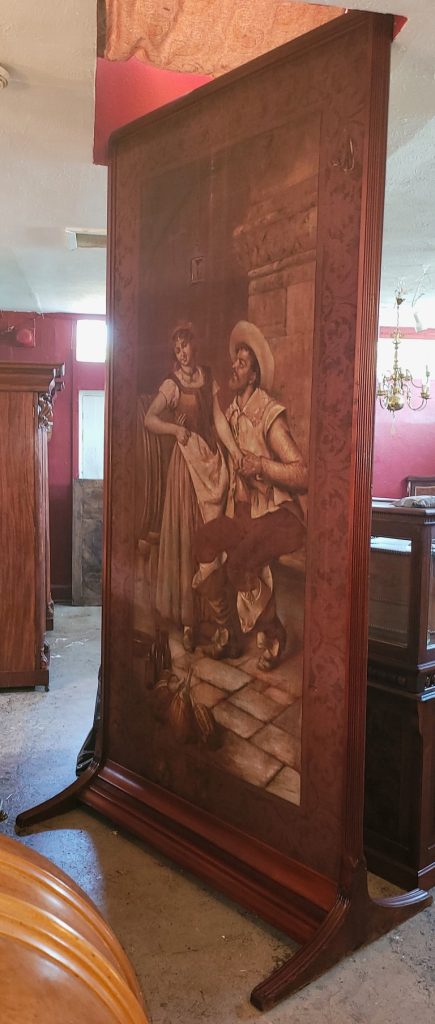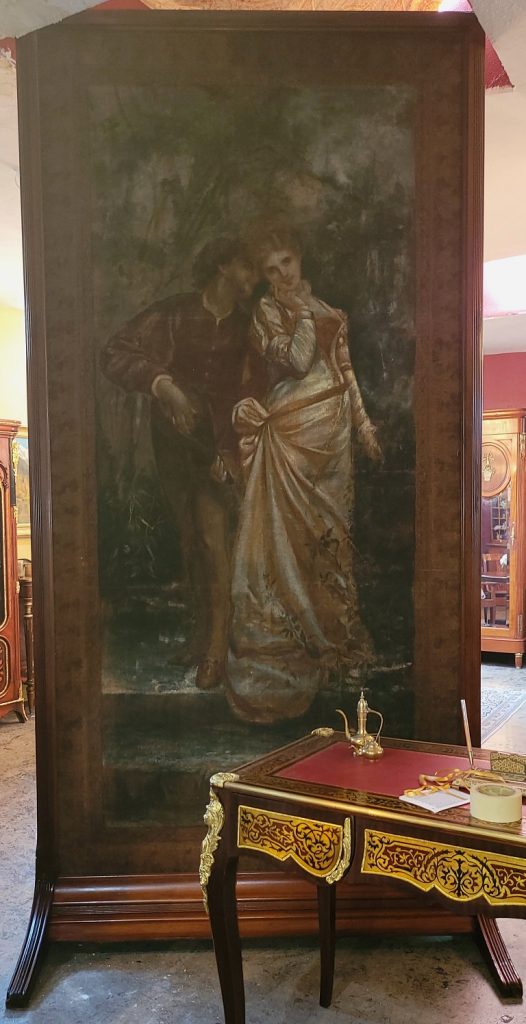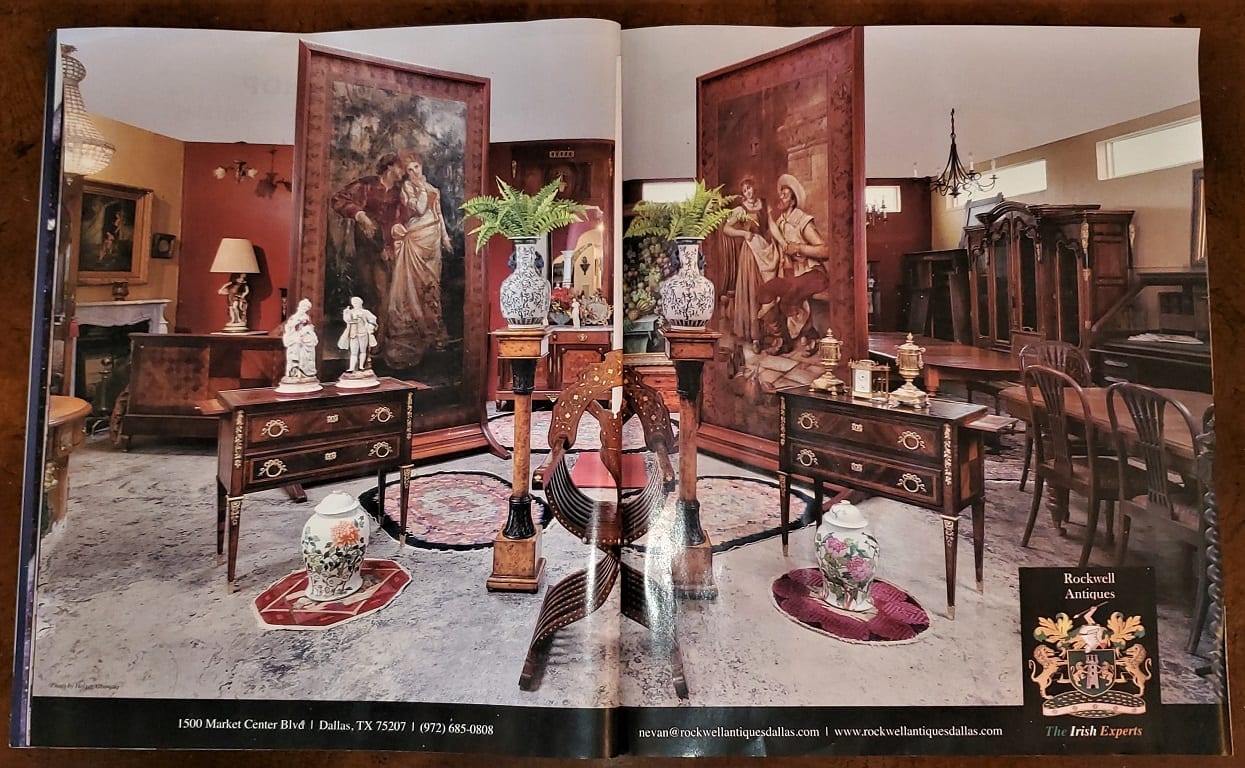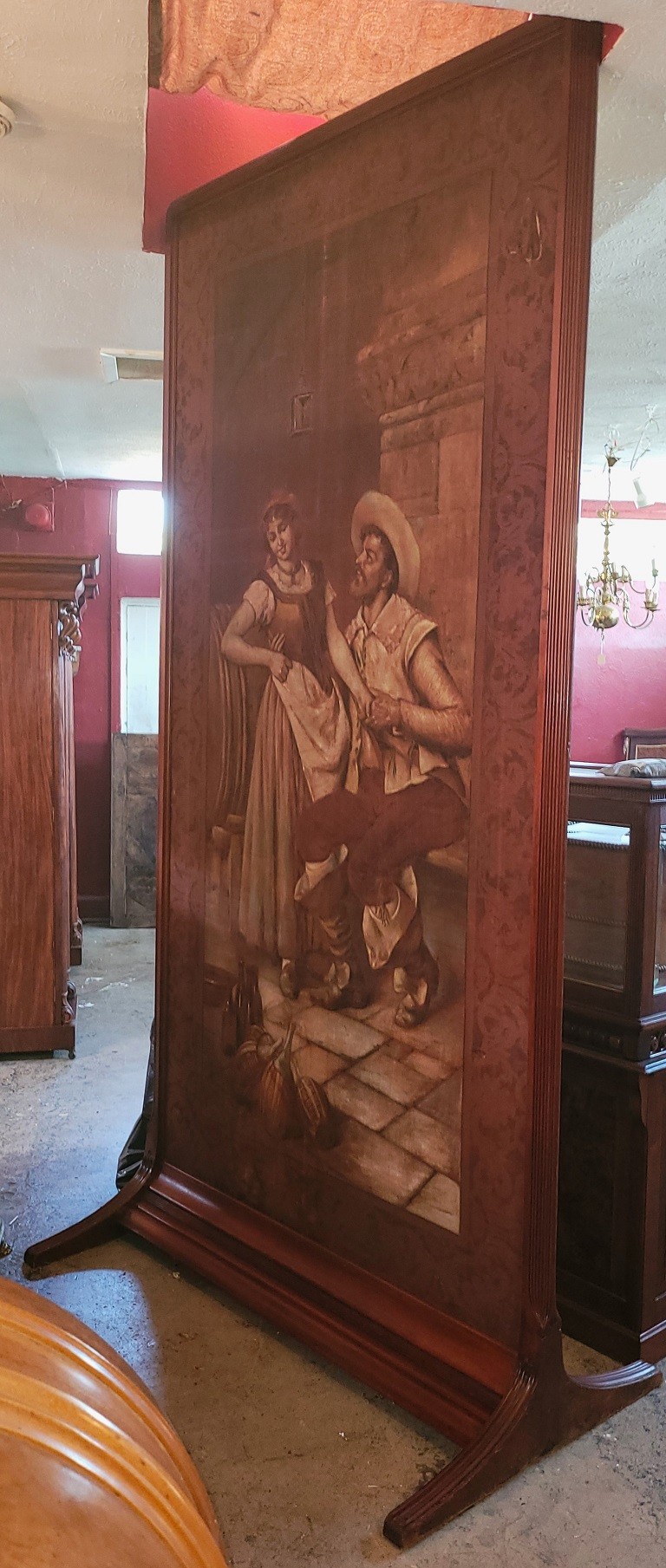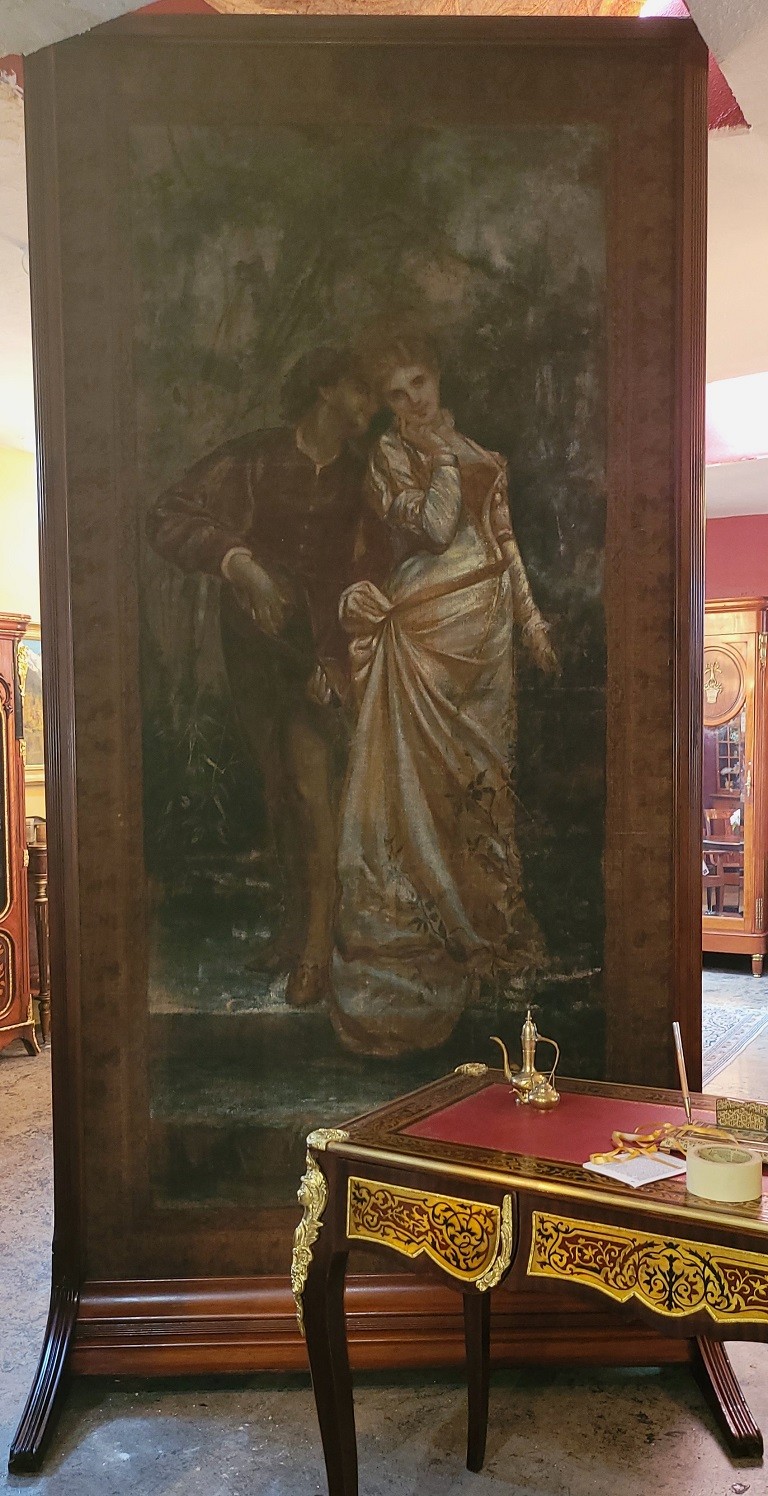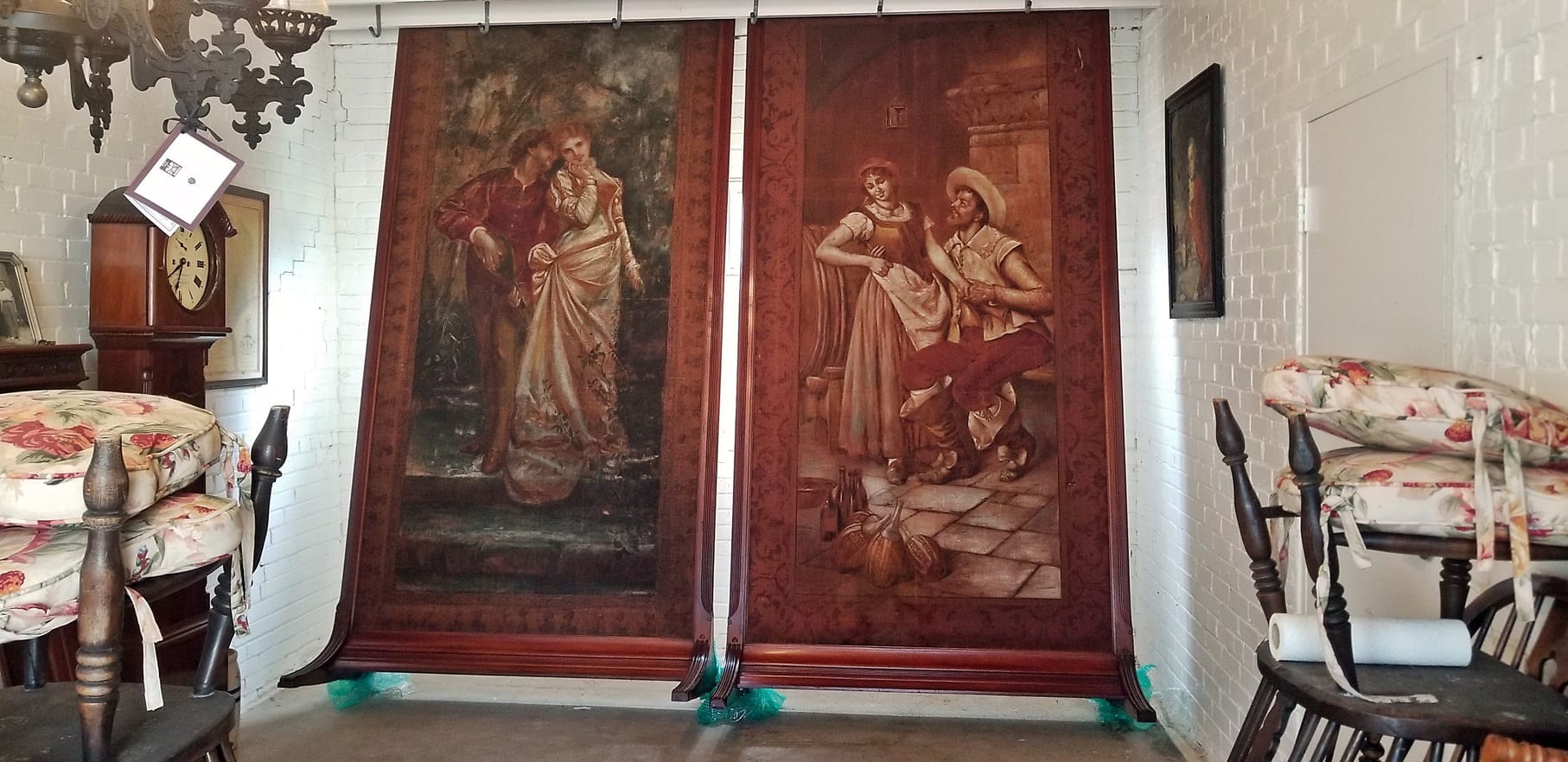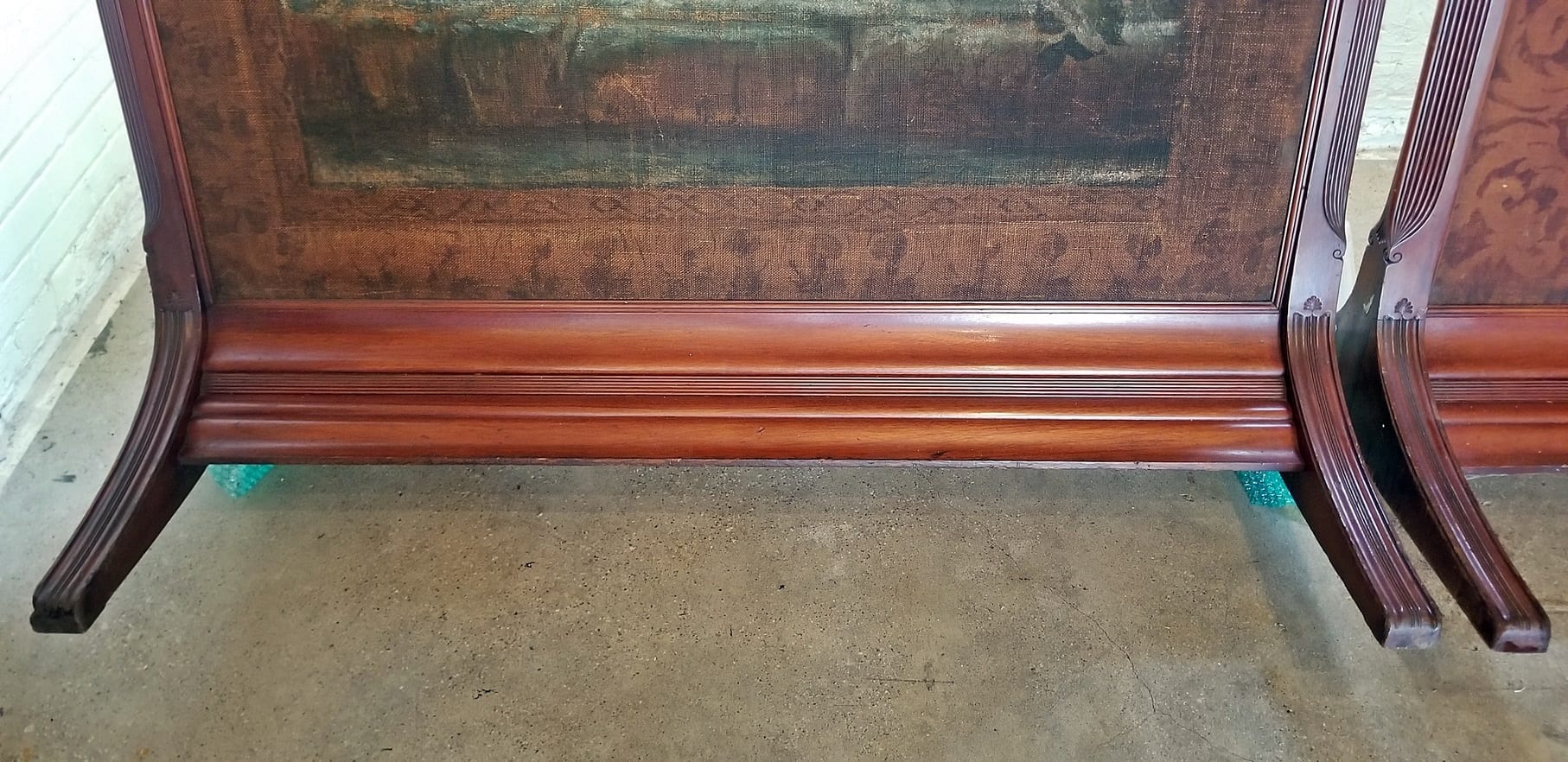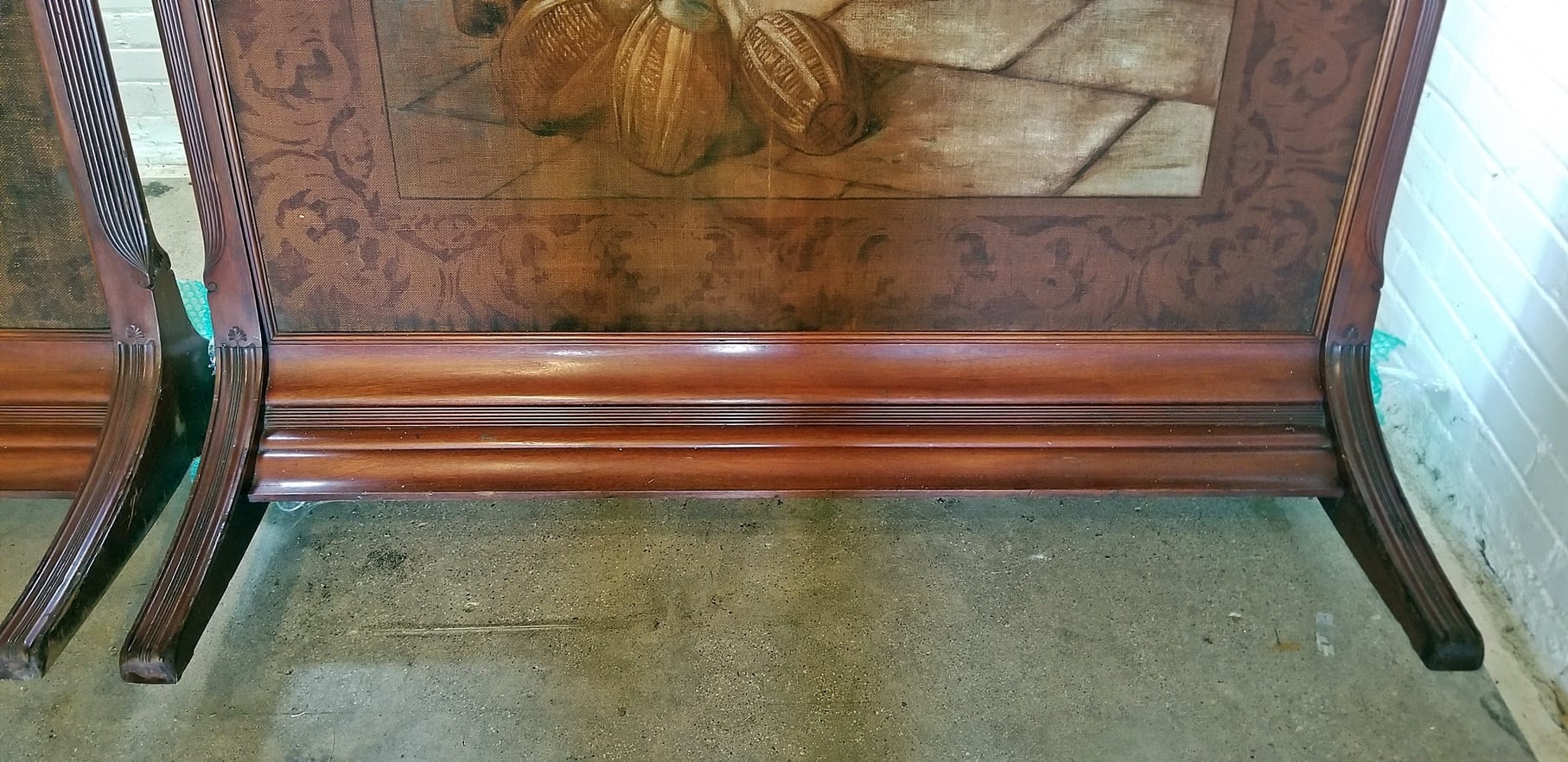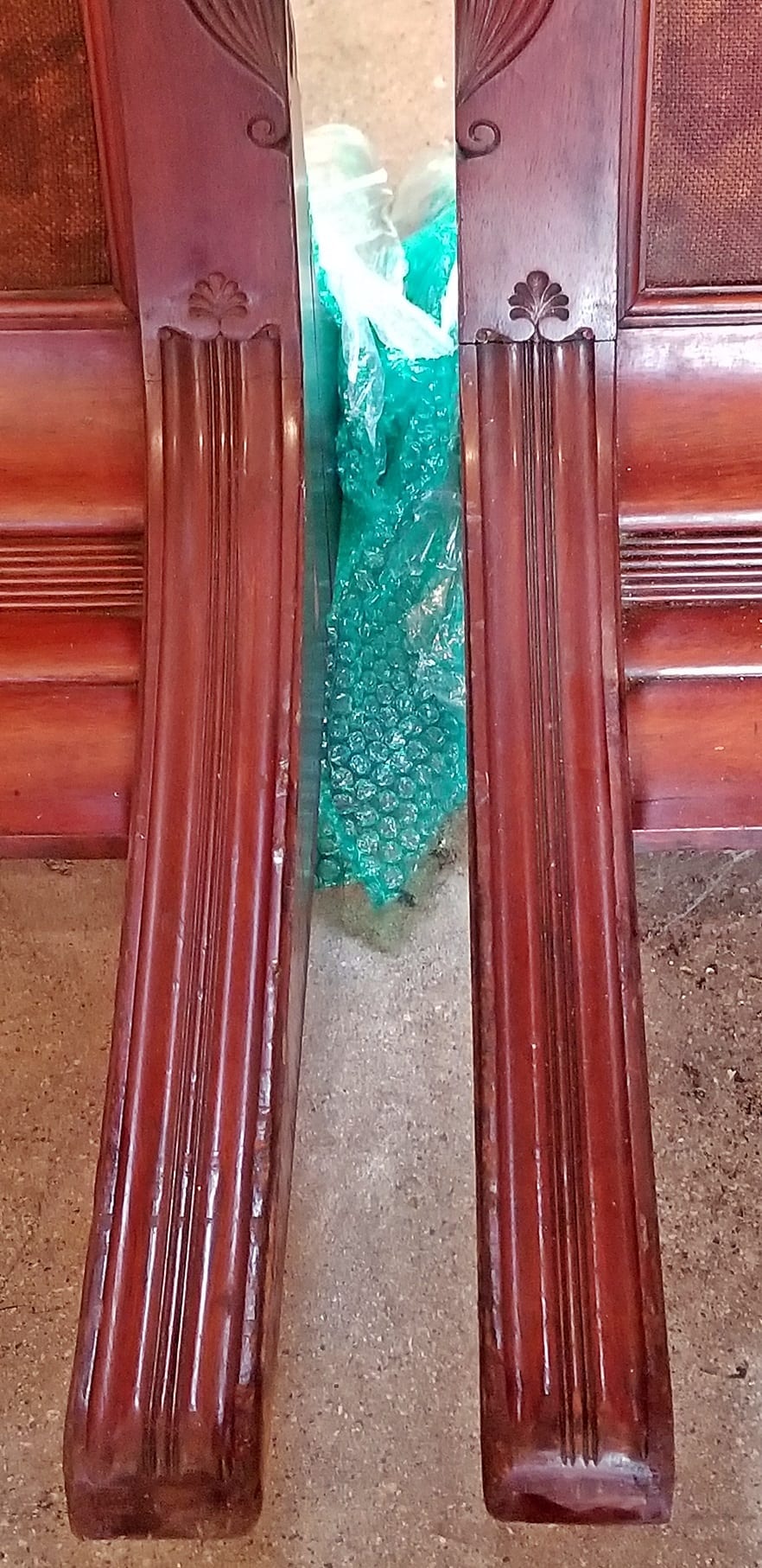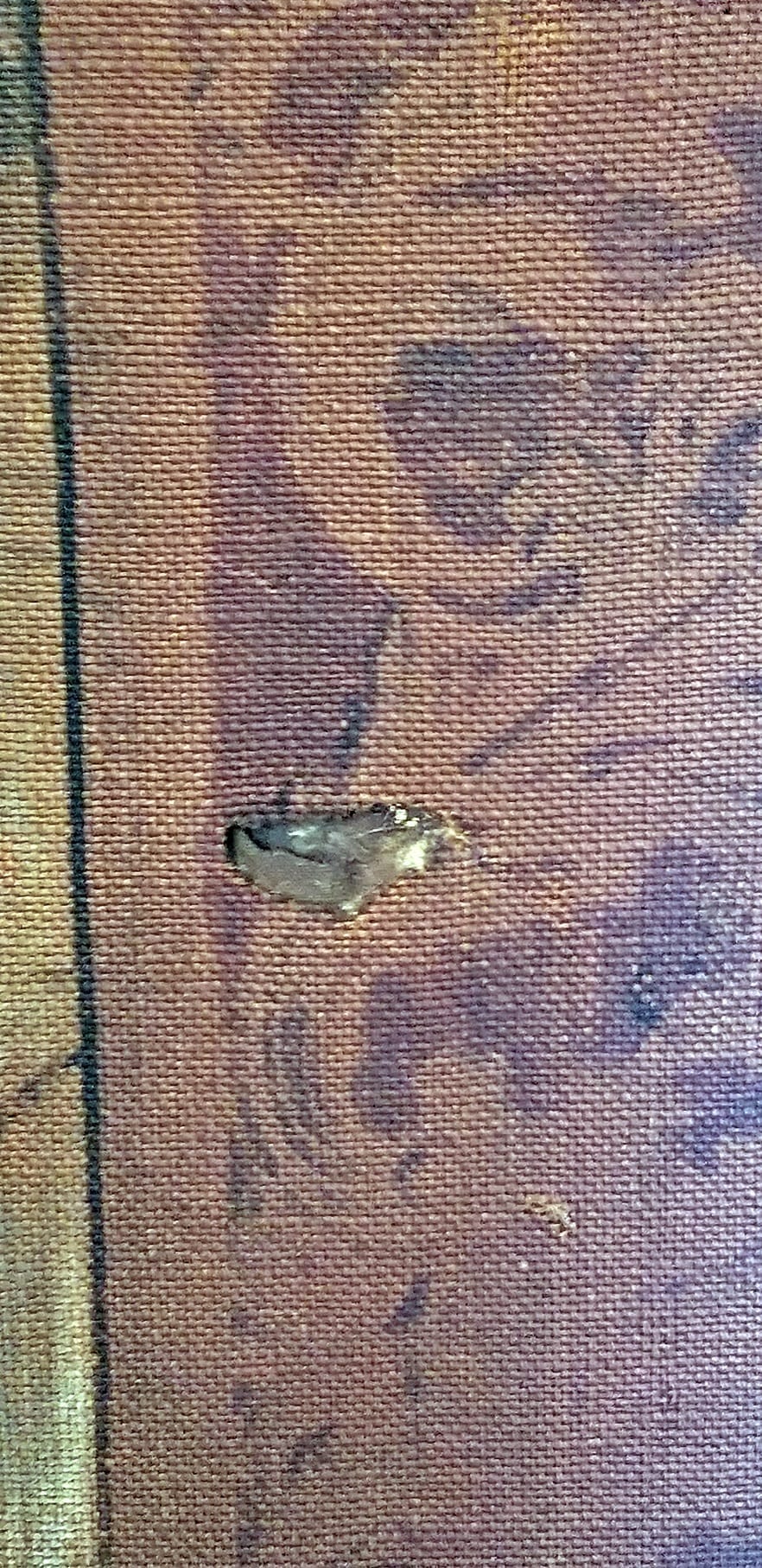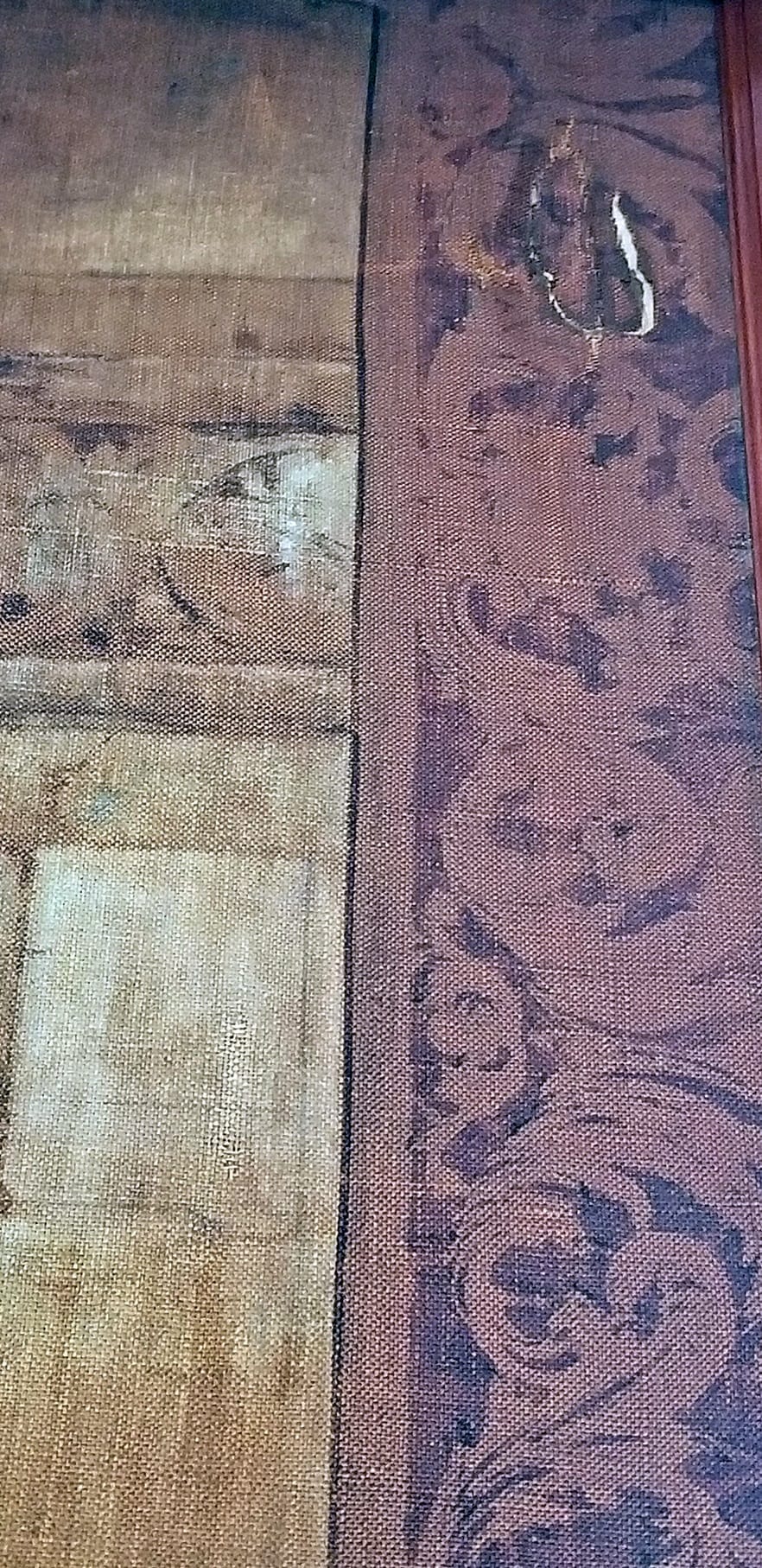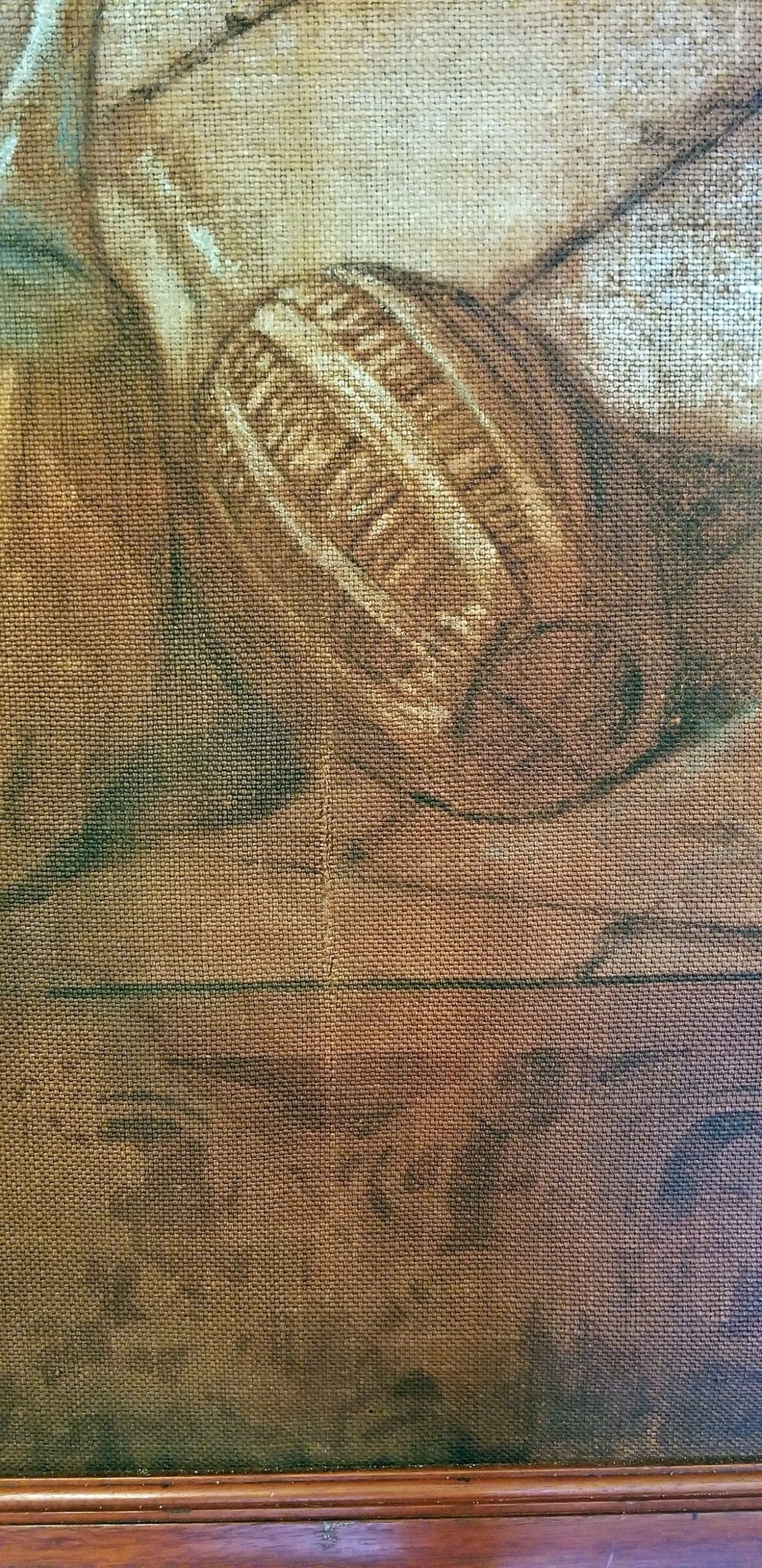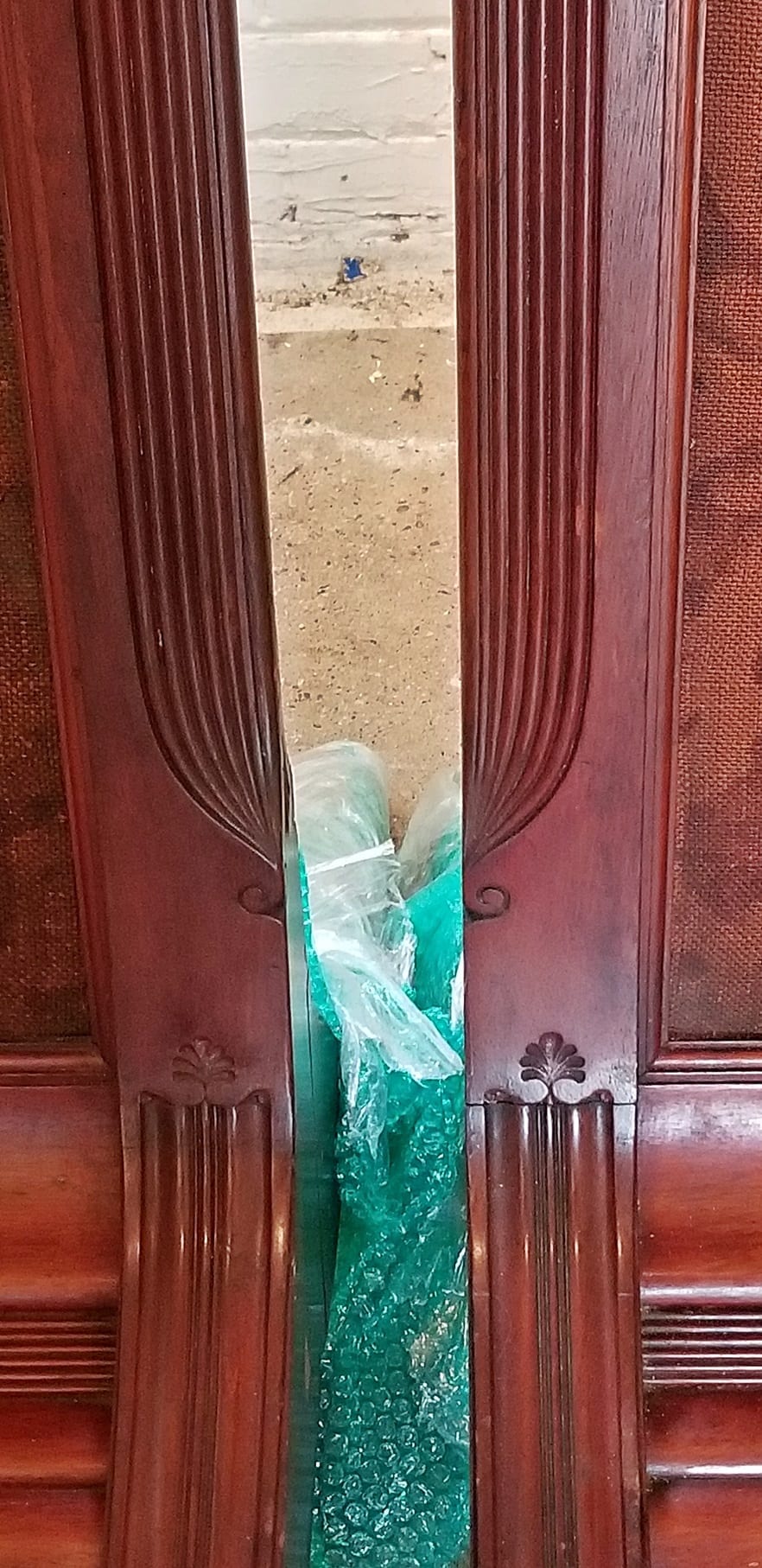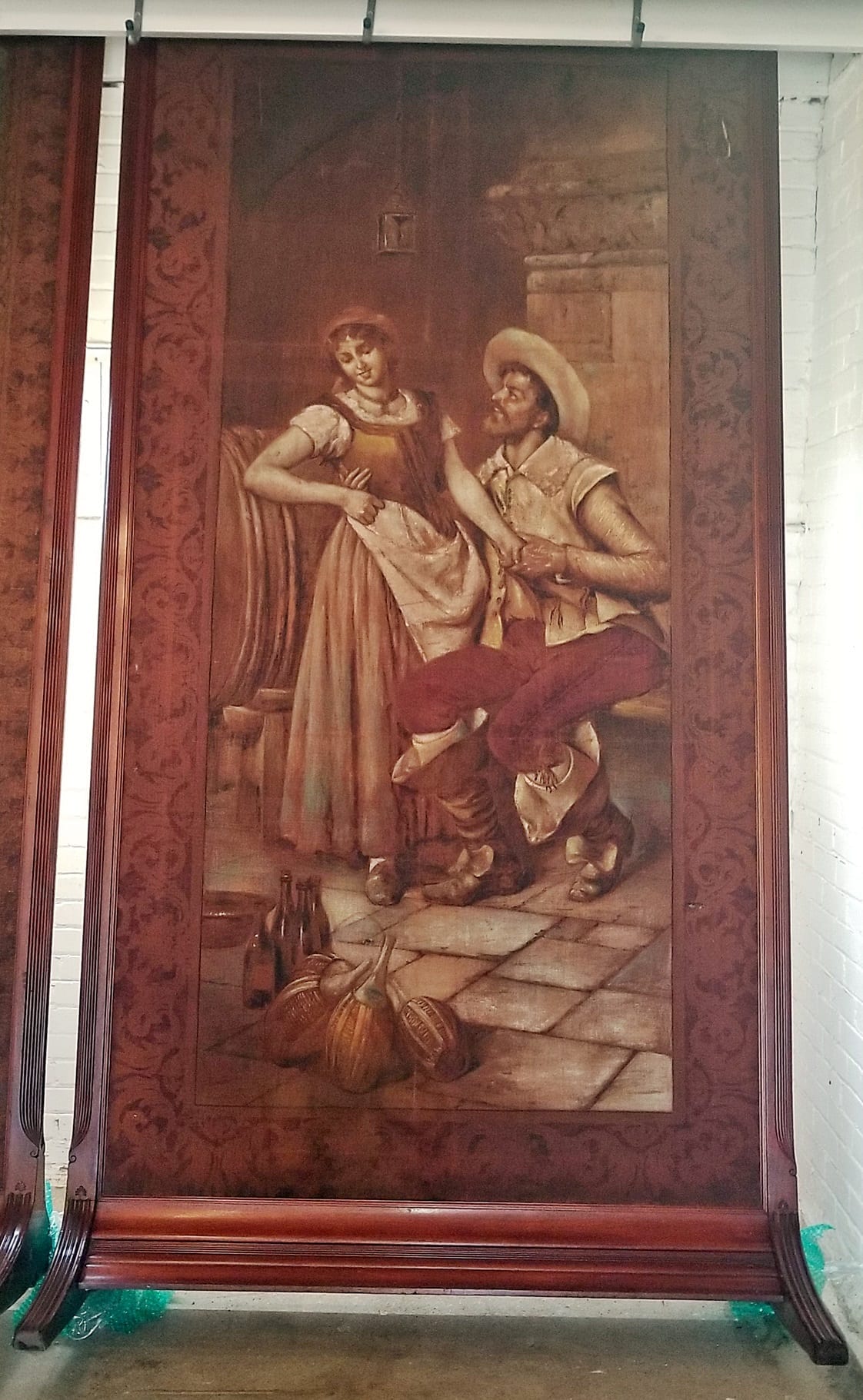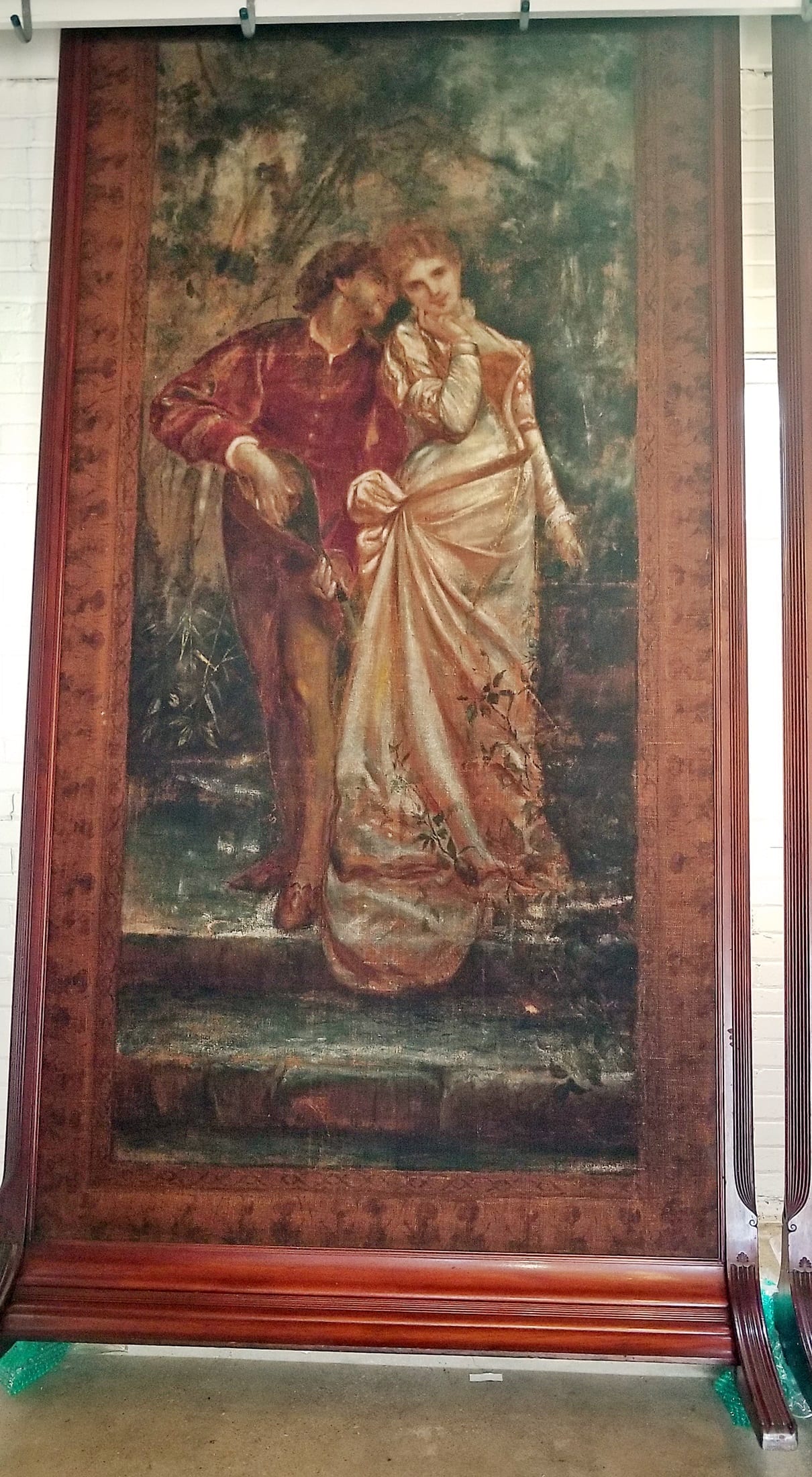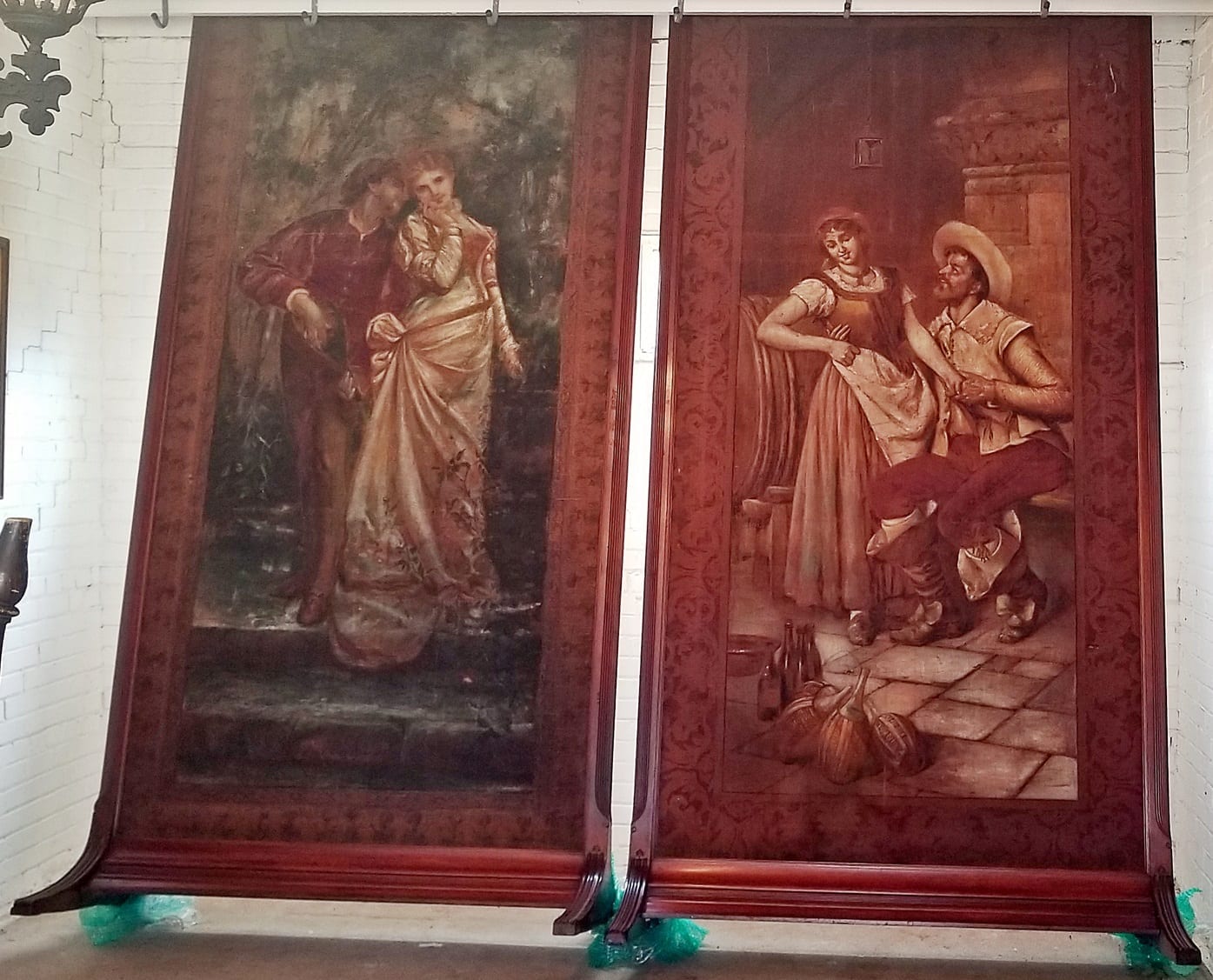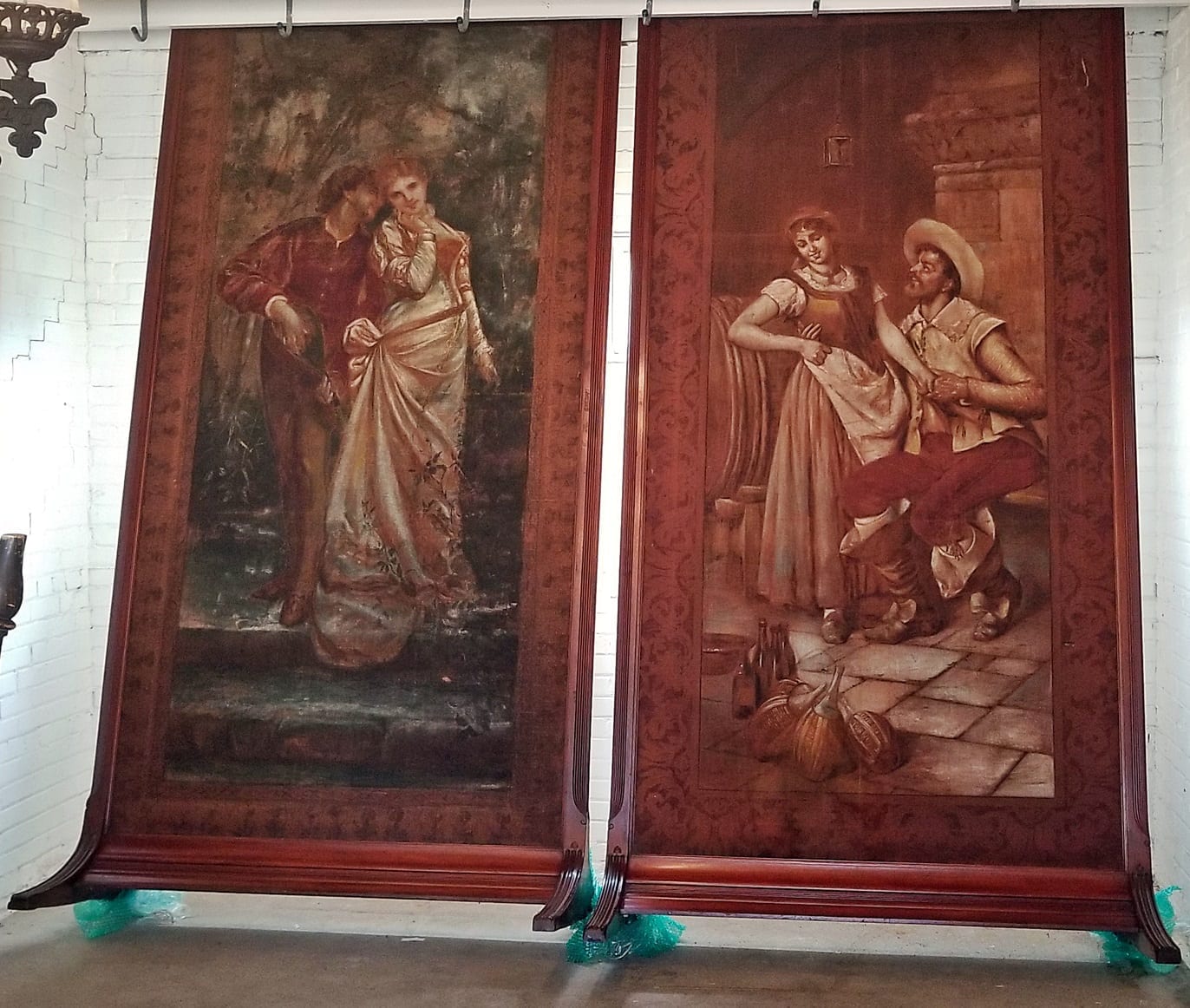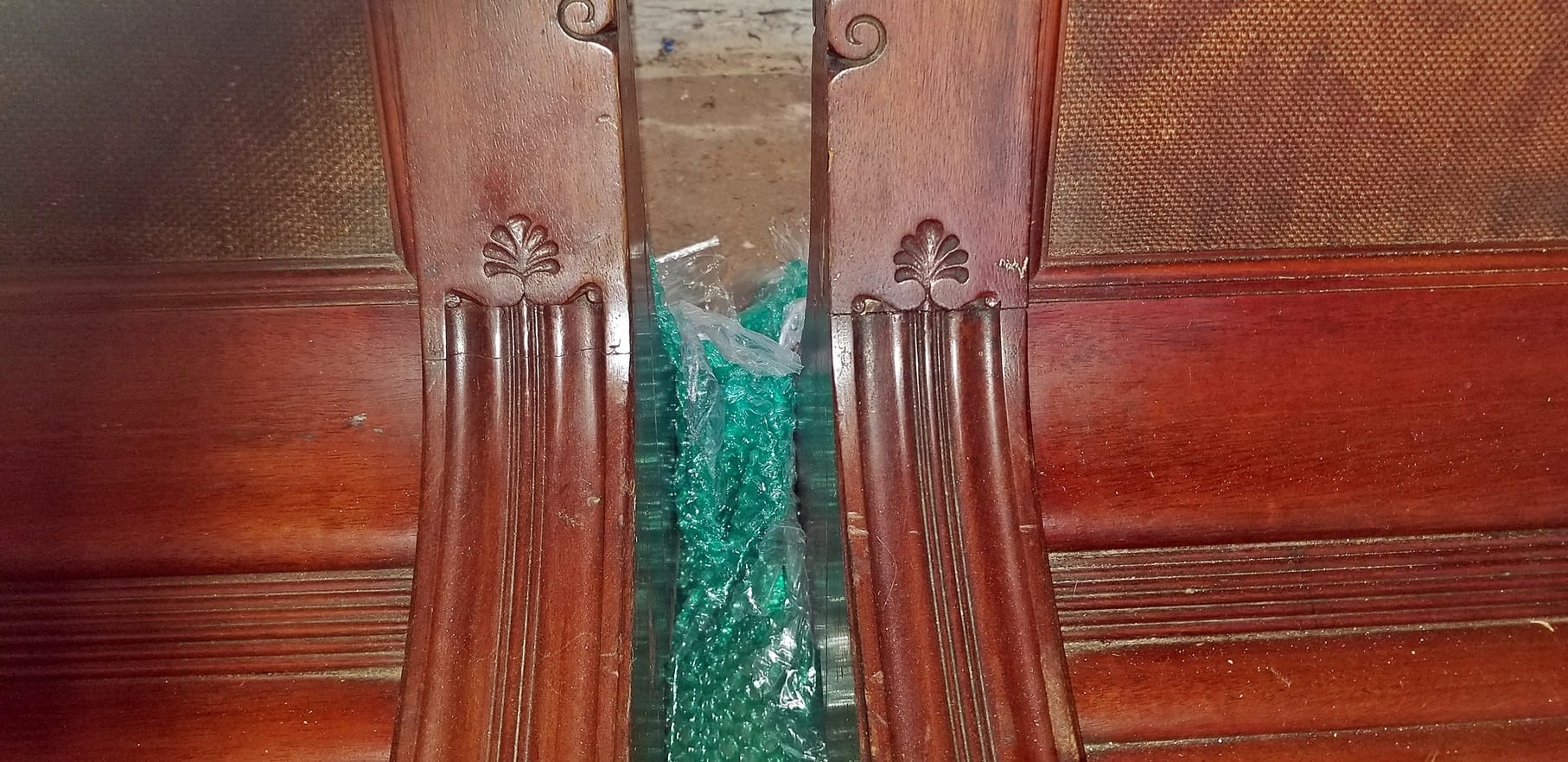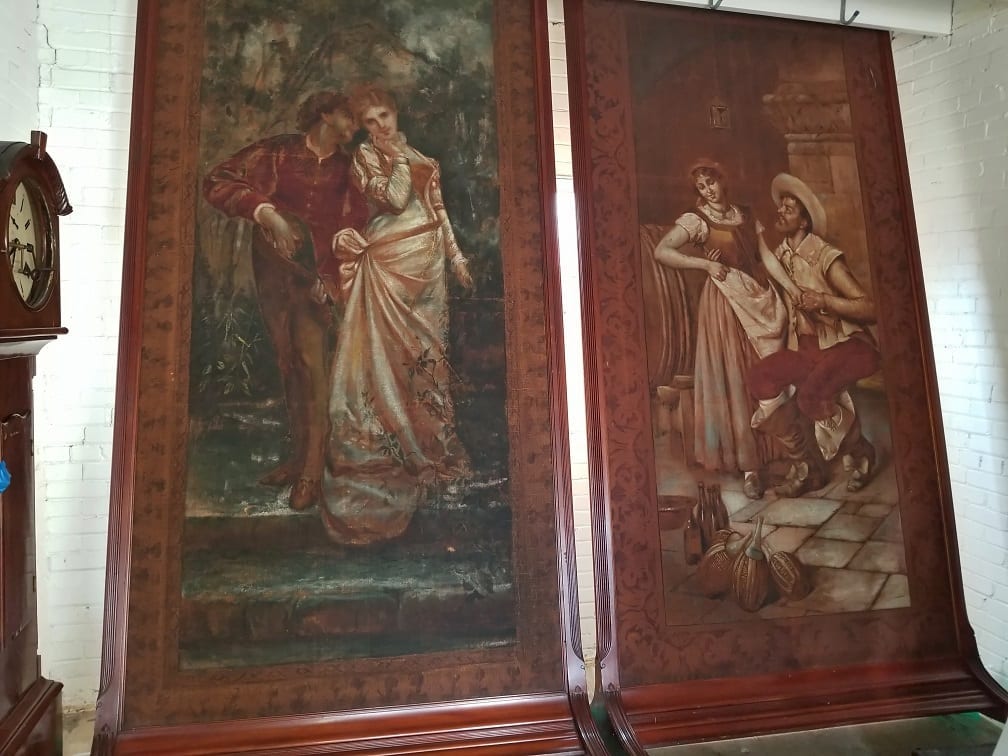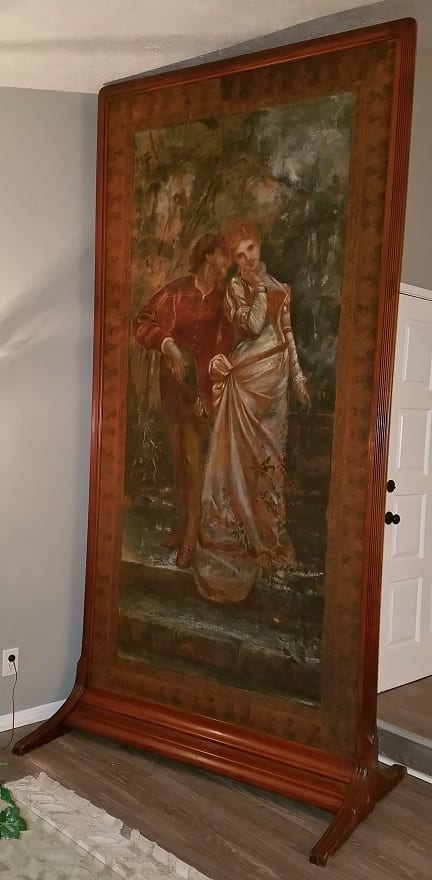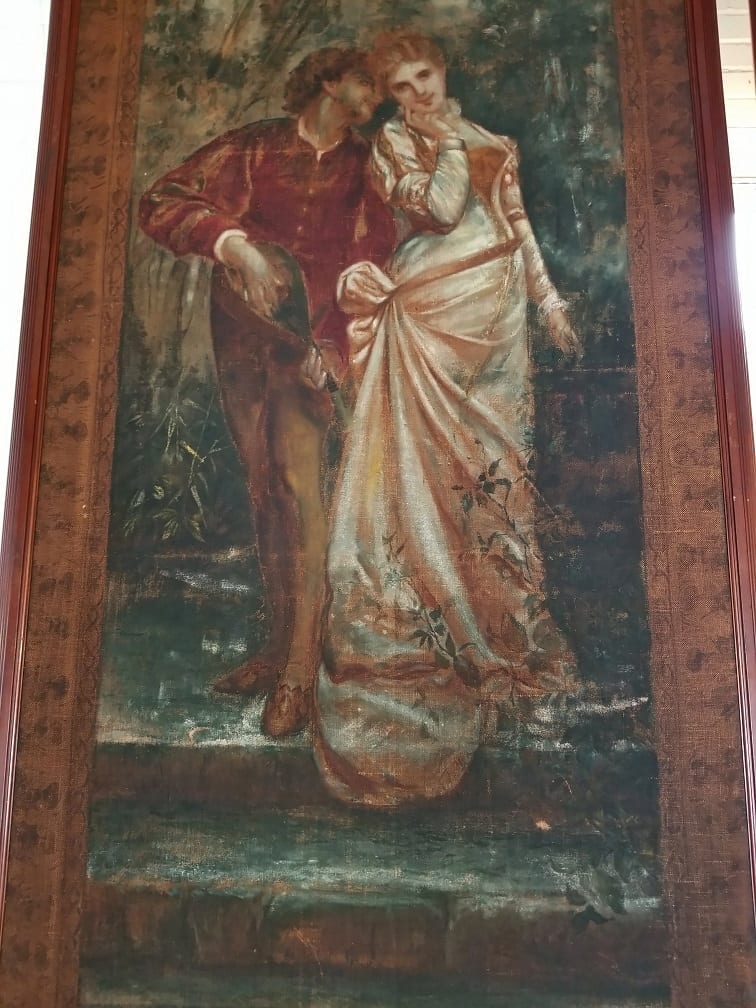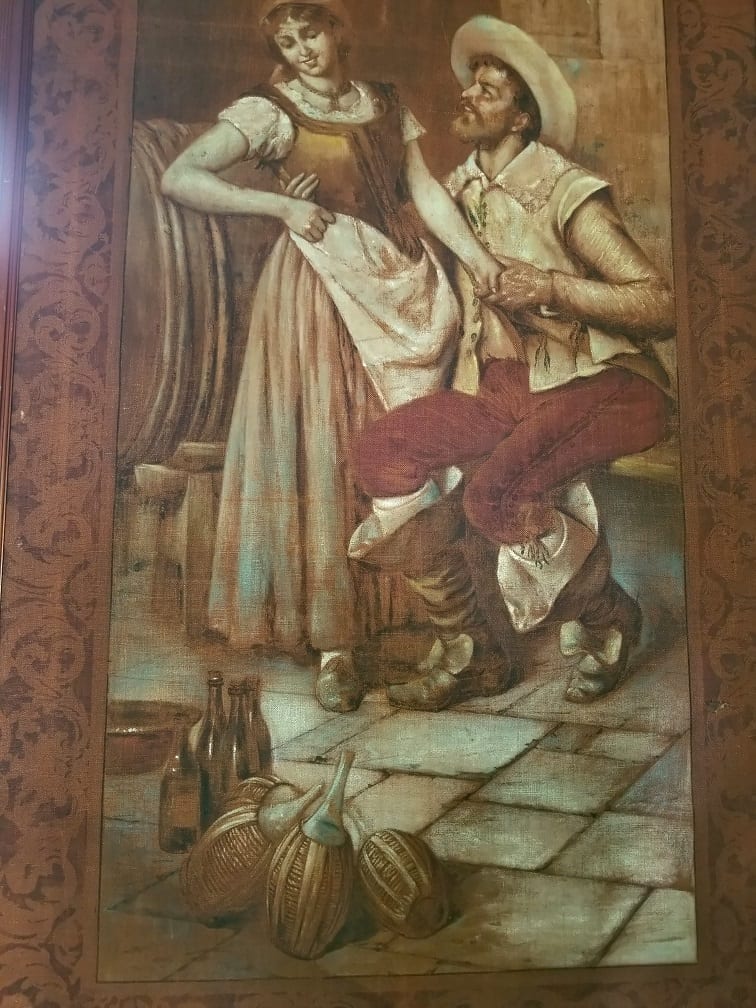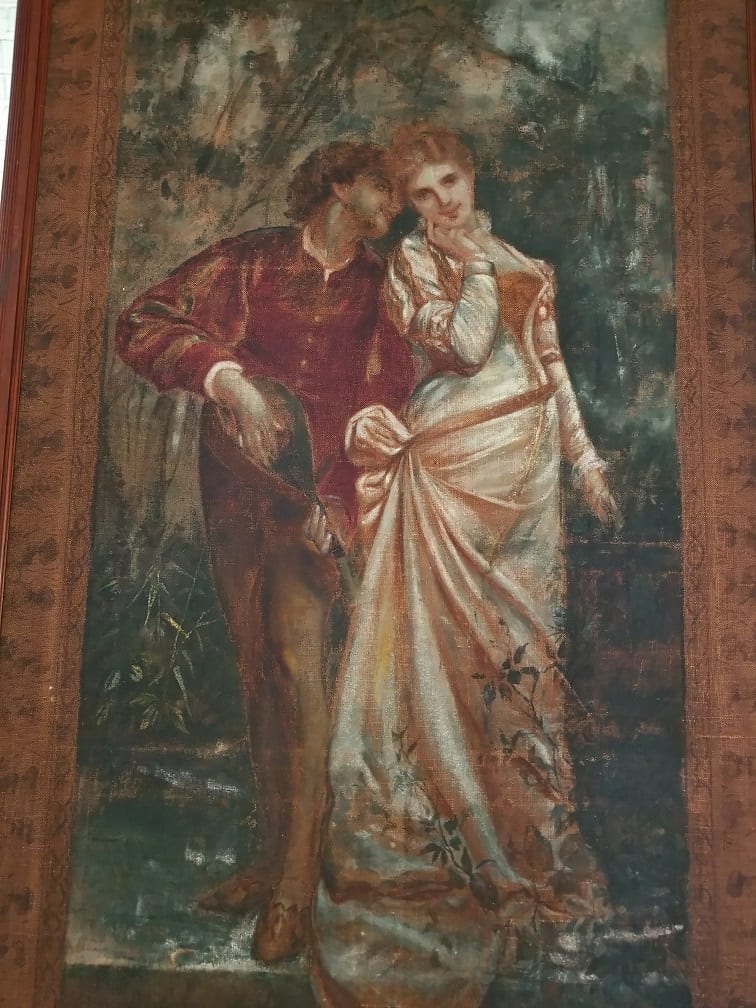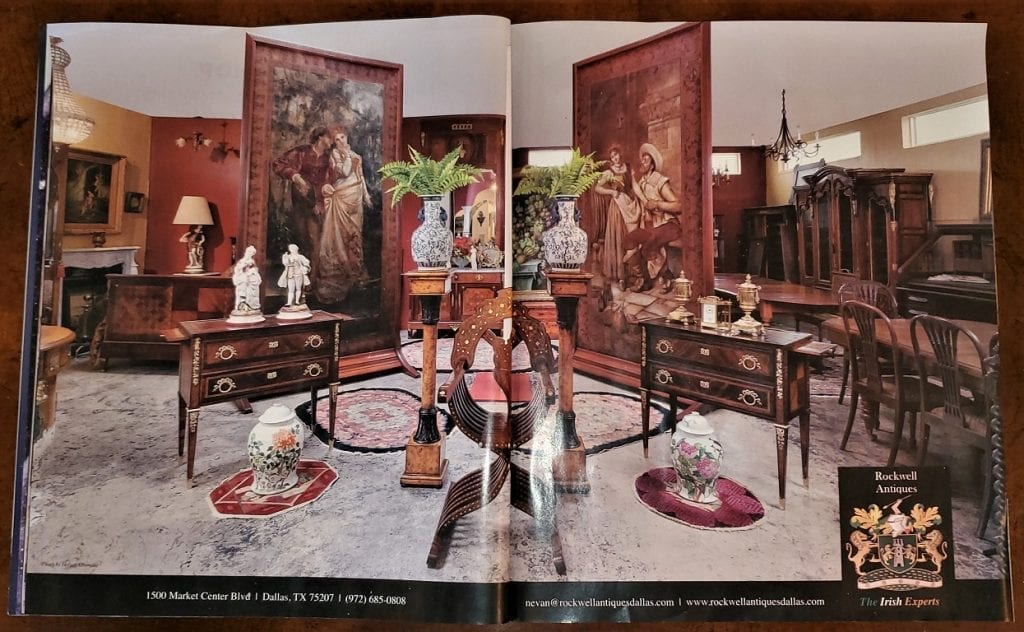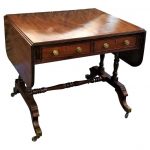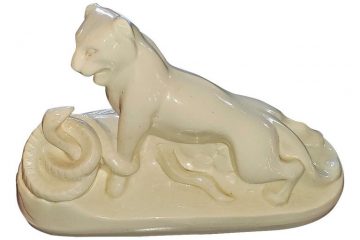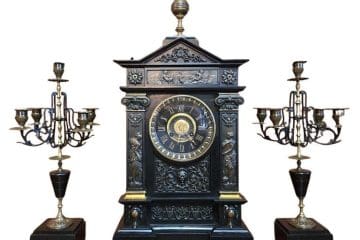Pair of Monumental English Regency Framed Italian 18C Painted Tapestries/Paintings
PRESENTING an EXCEPTIONAL Pair of Monumental English Regency Framed Italian 18C Painted Tapestries/Paintings.
We are of the firm opinion, that these tapestries were made and hand-painted in Northern Italy, in the latter half of the 18th Century, circa 1760-80. Probably in the region of Florence or Milan.
It really is a ‘quandary’ as to whether these should be described as tapestries or paintings.
Each tapestry/work of art appears to be hand-painted on a burlap canvas back.
Each is mounted in a mahogany, custom made, frame.
The frames are un-mistakeably, English Regency, circa 1780-1820.
The rear was originally lined with a gold velvet that has since decayed and been removed, but there is still evidence of the original. We have not re-lined it, as we think this would be a very easy repair for the buyer, with cloth and color of their choice.
The first tapestry features a ‘Romeo & Juliet’ style scene, with the gentleman serenading the lady by playing a Mandolin (a classically Italian instrument) in a garden setting. Both are in more high-end/elegant period attire.
The second tapestry, features a more rustic type scene, with the gentleman again serenading the lady but this time with bottles of ‘Chianti’ clearly involved, in a scene of merriment and harvest. Both are in period attire, but much more rustic in style.
They were obviously brought to Britain in the late 18th Century, as the Custom Made Mahogany frames are unmistakably ‘British Regency’ in style and construct. As the Regency Period spanned from circa 1780 to 1820 and the frames were obviously custom made then, the tapestries must predate this.
We are of the opinion that these tapestries were bought by a wealthy British person as part of their ‘Grand Tour’. There is evidence of creasing on the tapestries and in our opinion this shows that they were folded and sent back to Britain in the late 18th or very early 19th Century. The original buyer, then commissioned his British cabinetmaker, to custom make the mahogany frames to display them.
The frames on their own, are OUTSTANDING examples of Regency craftsmanship, with fluted and reeded edges, and a tree motif (an oak or sycamore tree) carved at the end of each side of the frame. Obviously, the craftsman’s signature!
Both end in deep, reeded and fluted platform feet, making them very stable.
HIGHLY, HIGHLY IMPORTANT
EXTREMELY RARE AND FINE QUALITY FRAMED TAPESTRIES/PAINTINGS/WORKS OF ART from circa 1760-80.
You will NOT find another Pair like this ANYWHERE!
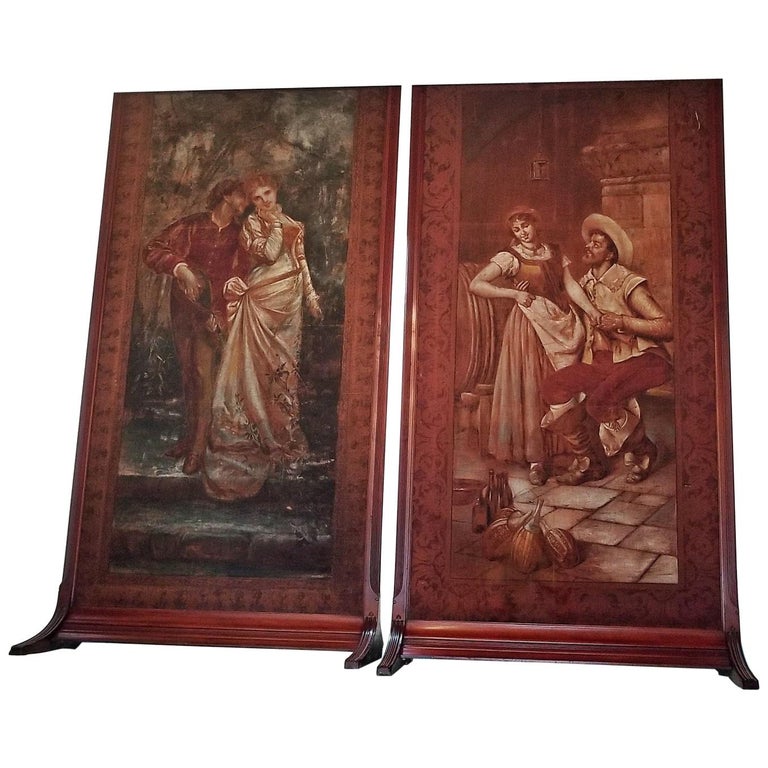
Regency Period Furniture (1800 – 1830)
Furniture styles often bear the name of the historical periods in which they occur. For English furniture, this often means naming a style after the king or queen on the throne at the time. With the Regency Period of furniture, the naming convention only partially applies and reveals the complicated political atmosphere of England at the time.
  |
In 1811, the Prince of Wales assumed rule of the country, not as a king, but rather as an acting monarch while his father suffered a long bout of mental illness. His official title during this time was Regent, hence the name Regency Period. Prince George held the position for nine years until his father died, leaving him the throne. Officially known as King George IV from his coronation in 1820 until his death in 1830, his rule both marked the time period for the Regency Period style, but also helped to influence the aesthetics through his preferences and commissioned projects.
Classical Influence
Unlike prior periods, borrowing elements from Roman and Greek furniture, designers of the Regency Period often tried to recreate the actual furniture pieces found in the museums, vaults, and artwork of the time. The introduction of Egyptian artifacts also sparked a desire to bring those elements into the Regency Period style. Thematic motifs of ancient gods, sphinxes, lions, and griffins ornamented many pieces. Additionally, a revival of Eastern influence from China and Japan inspired the use of bamboo, wood carved to resemble bamboo, and lacquered finishes.
Style
While all these cultural and historic influences helped determine the furniture of the Regency Period, the style itself used ornamentation for its elegance, rather than rich carvings and curved lines exhibited in earlier periods of furniture design. The woodworking of the pieces generally exhibited plain lines and surfaces with slender legs and right angles. In many ways, this helped highlight the ornamentation by providing a simplistic background to avoid distraction.
  |
Additionally, the size of furniture pieces changed with this period. Rather than the tall shelves of the past, cabinets and shelving units shrank in height to allow decorators to ornament the walls with paintings. The lower height of furniture also allowed for more display space to feature curios and treasures.
Elements
The components of Regency Period furniture include the selection of wood and the use of metals for accents. Mahogany remained the dominant wood for furniture design, while exotic wood like ebony was featured in many high-end pieces. Additionally, veneers of rosewood and zebrawood added visually striking surfaces or features to the clean lines of the style.
As stated before, the preferences of the Regent, Prince George of Wales, played a hand in guiding the style, particularly through his commissions for the Royal Pavilion. The designers who distinguished themselves at this time included Henry Holland, Thomas Hope, Thomas Sheraton, and George Smith.The addition of metal accents, however, gave Regency Period furniture its ornate elegance. Furniture makers primarily used brass, while occasionally including bronze or ormolu, an imitation gold. Brass inlays, accents along corners and legs, handles, and hinges, were popular. Of note, brass rosettes or lions’ heads to hold rings on cabinet doors and drawers decorated many pieces, while the bases of furniture legs were often animal feet made of brass. Glass insets on cabinet doors would also be covered and protected by brass grills in lattice patterns or scrollwork designs.
Link: https://study.com/academy/lesson/regency-period-furniture-history-characteristics.html
The frames are made of solid mahogany with beautifully carved reeded edges on each frame. They end in a solid 4 legged support with, again, beautiful reeding and a carved insignia of a tree above each leg support.
The frames alone, are stunning examples of regency designed furniture.
The Tapestries and frames are MONUMENTAL in size…..each is 10 feet tall and 5 feet wide.
This is a Once in a Lifetime Opportunity –
THESE ARE SIMPLY STUNNING & TRULY UNIQUE!
Pair of Monumental English Regency Framed Italian 18C Painted Tapestries/Paintings
Provenance: These tapestries/paintings were acquired by a High-end Collector at Auction from Christies in London circa 30 years ago and she paid a significant sum for them at that time. They have remained in her Private Collection in Texas ever since.
Condition: The frames have some minor scuffing on the feet with age. The ‘Romeo’ Tapestry is near mint. The ‘Rustic’ one has 3 minor tears (see photos) and some very minor water damage towards the base. But does not adversely affect the piece’s beauty and quality. Original velvet backing gone but can be easily replaced with fabric of choice.
Dimensions: Each is 120 inches tall, 60 inches wide and 35 inches deep at the feet.
PRICE $48,999 – SALE PRICE NOW: $26,000 (Pair)



